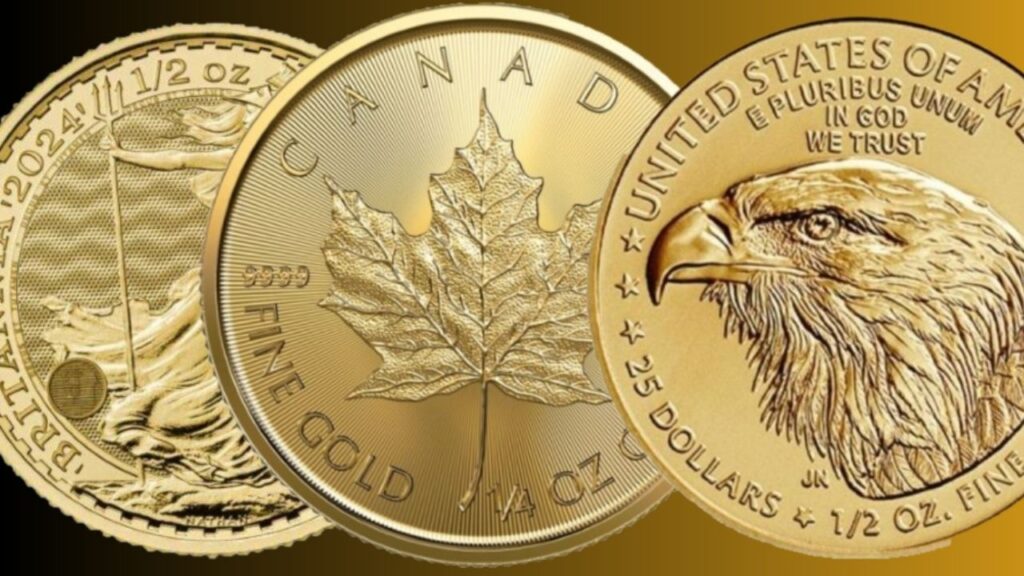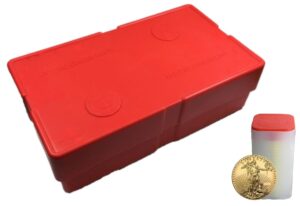
Fractional Gold Investing: A Beginner’s Guide
Fractional gold is a form of gold investment that involves purchasing small units of gold instead of traditional, larger bullion bars or full-size coins. This approach allows investors to partake in the gold market at a lower entry cost, making it accessible to a wider range of individuals. Fractional gold comes in various forms, including coins, rounds, and bars, offering flexibility and diversity to investors looking to diversify their portfolios with precious metals.
Investing in fractional gold offers several benefits, such as increased liquidity and affordability. By owning smaller pieces of gold, investors have the option to sell only a portion of their holdings if they need cash or wish to take advantage of favorable market conditions. This can be particularly appealing during times of economic uncertainty when the price of gold often rises. Given its divisibility, fractional gold also presents an opportunity for gifting and passing on wealth to future generations with ease.
Key Takeaways
- Fractional gold provides an affordable entry into gold investment.
- This investment method enhances liquidity and portfolio diversity.
- The cost and economic factors influence the market for fractional gold.
What Is Fractional Gold?

Understanding Gold Denominations
Gold is traditionally measured in Troy Ounces, a unit of measure distinct from the standard ounce used for everyday items. Buyers have the option to invest in a range of sizes, including standard one-ounce gold coins and bars, as well as fractional gold products.
Fractional Gold encompasses any gold piece that is less than one Troy Ounce. These come in various denominations, such as 1/2, 1/4, or 1/10 of a Troy Ounce. This can make gold investment more approachable, as the price per unit is lower than full ounce pieces. Consequently, these smaller increments are popular choices for gifts or as entry-level investment vehicles.
The types of Fractional Gold available to investors include both coins and bars. Coins, like Maple Leafs, Krugerrands, and Eagles, have the added advantage of being minted by governments, which often adds an extra layer of security and trust to the investment. Bars, on the other hand, might be produced by both government mints and private companies, offering variety in design and price points.
Benefits of Fractional Gold Investment

High Liquidity and Flexibility
Fractional gold enjoys a high level of liquidity, meaning it can be easily bought or sold in the market due to its more accessible price points. For example, smaller gold pieces such as 1/10 or 1/4 ounce coins are more affordable than a full ounce, making them easier to trade. Flexibility is another key benefit, as investors have the freedom to sell only a portion of their holdings as needed rather than liquidating a larger investment all at once.
Ideal for Diversifying Investment Portfolio
Diversification is a cornerstone of a robust investment strategy. Fractional gold plays a pivotal role in diversifying one’s portfolio by providing a counterbalance to more volatile assets. Since it’s priced in smaller denominations, investors have the opportunity to gradually build a gold position without committing to larger, more expensive gold bars or coins immediately. This ability to buy little and often helps investors avoid timing the market and reduces the risk of price fluctuations.
Buying Fractional Gold Coins

Popular Fractional Coins
American Gold Eagle: As one of the most recognized fractional gold coins, the American Gold Eagle is minted in denominations of 1/10, 1/4, and 1/2 ounces. It boasts a classic design and is widely traded.
Gold Britannia: The Gold Britannia from the United Kingdom is available in various fractional sizes, including 1/10 oz. This coin is renowned for its fineness and is a favorite among collectors.
Canadian Gold Maple: The Canadian Gold Maple Leaf is another sought-after fractional coin, known for its 99.99% purity and iconic maple leaf design. Investors can acquire this coin in sizes as small as 1/20 oz.
Investing Through Reputable Dealers
When buying fractional gold coins, it’s crucial to purchase from a reputable dealer. This ensures authenticity, proper pricing, and security in your investment. Metals Mint offers a selection of fractional gold coins, from the American Gold Eagle to the Gold Britannia and Canadian Gold Maple Leaf, often with the convenience of online purchasing.
Look for dealers with positive reviews and transparent practices. It’s also beneficial to compare prices and buy-back policies, as these can significantly influence the overall value of your investment. Keep an eye on our Deals page for discounts on fractional gold products.
Cost and Premiums of Fractional Gold

Understanding Premiums
Premiums refer to the additional cost over the spot price of gold that buyers pay when purchasing gold coins or bars. For fractional gold, which includes pieces that are less than one ounce, the premiums are typically higher due to fixed production costs. Despite the lower gross cost, the higher premiums mean that buyers might encounter a more substantial cost percentage-wise. For example, one may pay a higher markup price per ounce when buying ten 1/10 oz gold coins as opposed to a single 1 oz coin.
Cost Comparison with Full Ounce Gold
When comparing the cost of fractional gold to a full ounce, one must consider the price in relation to the amount of gold received. The markup price of fractional pieces can be significant, especially when purchased in small quantities. Unlike the larger 1 oz gold bullion, fractional pieces, such as 1/2 oz, 1/4 oz, or 1/10 oz, can cost more per ounce. The premiums over the spot price of gold will vary, but fractional pieces can incur premiums that range from a moderate percentage to substantially higher figures, impacting the overall investment value.
Physical Gold Bars

Fractional Gold Bars
Fractional gold bars are smaller units of gold bullion, offering an accessible entry point for new investors or those looking to diversify their portfolio without committing to full-sized one ounce or larger bars. Reputable refiners like Pamp Suisse and Credit Suisse are known for producing high-quality fractional gold bars, which investors may prefer due to their reputation and trustworthiness in the market.
Investors choose fractional gold bars because they are more liquid compared to larger bars, meaning they can be sold more easily if smaller amounts of cash are needed. These bars come in various weights, from as small as 1 gram to as large as half an ounce. This variety allows for portfolio diversity and the ability to invest according to one’s budget, further reducing the barrier to entry into the gold market.
Economic Factors Affecting Fractional Gold

Gold Prices and Economic Uncertainty
Gold prices tend to rise during periods of economic uncertainty. Factors such as geopolitical events, shifts in the stock market, or concerns about economic stability may push investors towards the relative safety of gold, including fractional-sized pieces. These smaller increments of gold, often less than one Troy ounce, offer accessibility to the gold market for those who may not wish to afford or store larger amounts of the precious metal. They can serve as a safeguard, providing liquidity and retaining value in times where traditional investments might be more volatile.
Hedge Against Inflation
Gold has historically been a hedge against inflation. When the cost of living increases, the value of currency can decline, causing people to turn to tangible assets like gold that typically maintain their value. Investors often buy gold, including fractional gold, as it’s considered a more stable asset compared to many other investments, such as equities or bonds. Despite its smaller size, fractional gold remains based on the spot price of gold, thus serving as a proportionate part of an investment that can help protect their wealth from erosion due to inflation. Some investors have been considering fractional gold for their precious metals IRAs because when taking an RMD (required minimum distribution), they can take delivery of their gold as a distribution instead of cash.
Challenges in Fractional Gold Investment

Assessing the Risks
When considering fractional gold as an investment, the downsides often revolve around the market’s premiums and limited selection. Investors might find that the premiums over the spot price can be higher for fractional pieces compared to larger gold bars or coins. This is due to the relative cost of production and distribution being spread over a smaller amount of gold. It’s important to scrutinize these premiums as they can significantly affect the investment’s cost basis.
The selection of fractional gold options is often less abundant than their full-sized counterparts. This limited selection may constrain investors looking for specific coins or bars to add to their portfolios, potentially leading to a compromise on their investment strategy.
Considerations for Storage
Concerning storage, investors must deliberate over how and where to store their fractional gold. Secure storage is paramount to protect the investment; however, the costs associated with safe deposit boxes or home safes can add up. Furthermore, smaller gold pieces can be easier to misplace or lose.
Storage should also be contemplated in terms of liquidity. Fractional gold may be more liquid in some scenarios, as smaller pieces can be sold more readily than larger ones, but investors should extract assurance that their choice in storage does not impair their ability to sell or trade swiftly.
By understanding and planning for these challenges inherent in fractional gold investment, one can approach this venture with greater confidence and preparedness.
Collecting and Aesthetics

Fractional Gold for Collections and Jewelry
Collection Building: As a passionate collector, one appreciates the value of acquiring fractional gold coins for their detailed artistry and historical significance. These smaller denominations allow for a more accessible entry point into gold collecting, enabling a more diverse and frequent addition to one’s portfolio.
Bartering: One may also consider the practical aspect of fractional gold. In scenarios where smaller trade units are preferable, fractional gold’s variety in sizes makes them ideal as a potential bartering tool.
Beautiful Designs: When it comes to aesthetics, fractional gold holds no bounds. Each coin boasts intricate engravings and designs, representing their country of origin and cultural heritage. The purity of these coins is often impeccable, frequently at or near 99.9% pure gold, adding to their desirability and luster.
Gold Coins and Jewelry: It’s not only collectors who treasure fractional gold, but designers and artisans, too. Fractional gold coins can be incorporated into jewelry pieces, transforming financial assets into wearable art. Due to its high value and splendid appearance, gold jewelry remains a cherished possession and a functional piece for any wardrobe.
Frequently Asked Questions
What are the advantages of purchasing fractional gold coins over larger units?
Fractional gold coins offer greater flexibility and affordability for investors not looking to commit a large sum of money all at once. They allow entry-level investors to incrementally build their gold portfolio over time.
How does the value of fractional gold coins compare to their full ounce counterparts?
Fractional gold coins often carry a higher premium over their gold content than full ounce coins. This is because minting costs remain relatively constant regardless of the coin’s size, making the per-gram cost higher for fractional pieces.
What factors should one consider when choosing the best type of fractional gold to invest in?
One should consider premiums, liquidity, and the reputation of the mint when selecting fractional gold. Recognizable coins from established mints typically retain higher liquidity in the market.
Why is there a price premium on smaller fractional gold coins?
The price premium on fractional gold coins is largely due to the cost of production, which includes design, minting, and distributing them. These costs proportionally affect smaller denominations more than larger ones.
Can you explain the difference between fractional gold and silver investments?
Fraction gold investments tend to carry higher premiums than silver due to the higher cost of gold per ounce. Fractional silver is more abundant and generally has lower premiums, offering a different value proposition for investors.
What is the typical price range for fractional gold coins in the market?
Smaller gold coins, such as the 1/10 oz size, can have price ranges significantly above the spot price of gold due to premiums. Prices vary based on factors like the specific coin, its condition, and the current gold market.


